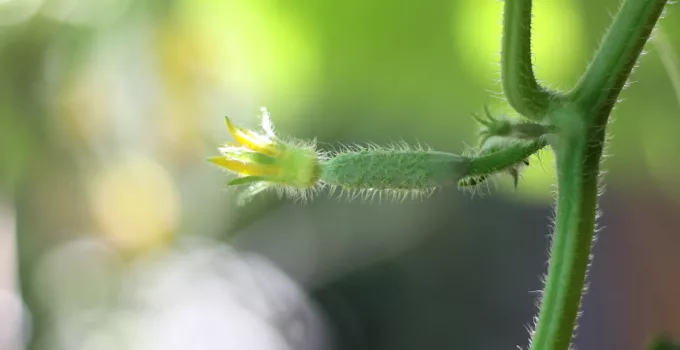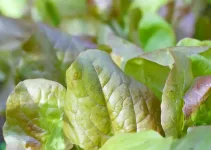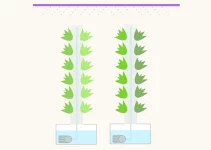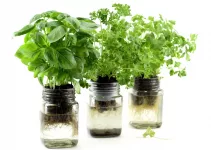This guide on how to grow cucumbers hydroponically will be pretty complicated. There are a lot of factors to consider, from growing conditions to choosing the system, if you already don’t have one.
But that’s what this guide is here for. I’ll try to make everything simple and I’ll even cover the systems that beginners or those who live in small spaces can use for hydroponic cucumbers and all sorts of plants.
Check out my article on the growing stages of cucumbers if you want to know what you should expect during each stage and when you can harvest.
Table of Contents
How to Grow Cucumbers Hydroponically: Indoor Gardens
1. One of the Best: AeroGarden Bounty
If you have a nice budget and you want to experiment with indoor gardens before moving up to bigger systems to grow cucumbers hydroponically, the AeroGarden Bounty can be a good starting point. It comes with instruction, you’ll even find plenty of YouTube tutorials to help you if you’re a beginner. It’s a nice system if you want to grow 2-3 plants. AeroGarden Bounty also includes grow sponges, domes, nutrient solution and easy-to-follow instructions.
2. Excellent: Aerospring 27-Plant Vertical Hydroponics Indoor Growing System
The Aerospring 27-Plant Vertical Hydroponics Indoor Growing System is on another whole level both in terms of price and what it offers. It’s a hydroponic tower that is absolutely amazing. But it’s a lot cheaper to make your own hydroponic system, that’s for sure.
Should Beginners Grow Hydroponic Cucumbers?
I like starting my articles on how to grow a certain plant in a hydroponics system by establishing if beginners should attempt it or not. In this case, just like it was the case for hydroponic tomatoes, the answer would pretty much be no.
Even so, don’t let that keep you away from giving it a go. If you really want to know how to grow cucumbers hydroponically, you’ll discover a lot of useful info in this article.
In general, my opinion is that if you haven’t even grown herbs hydroponically or lettuce, then don’t begin your journey by wanting to know how to grow cucumbers hydroponically.
Herbs (basil, cilantro, parsley) and leafy greens will give you a clear understanding of what hydroponics is without making you feel like your head’s going to explode. They don’t require too much knowledge or too much time.
You will also get a clear understanding about hydroponic systems and which are the best for you.
How to Grow Cucumbers Hydroponically: Conditions
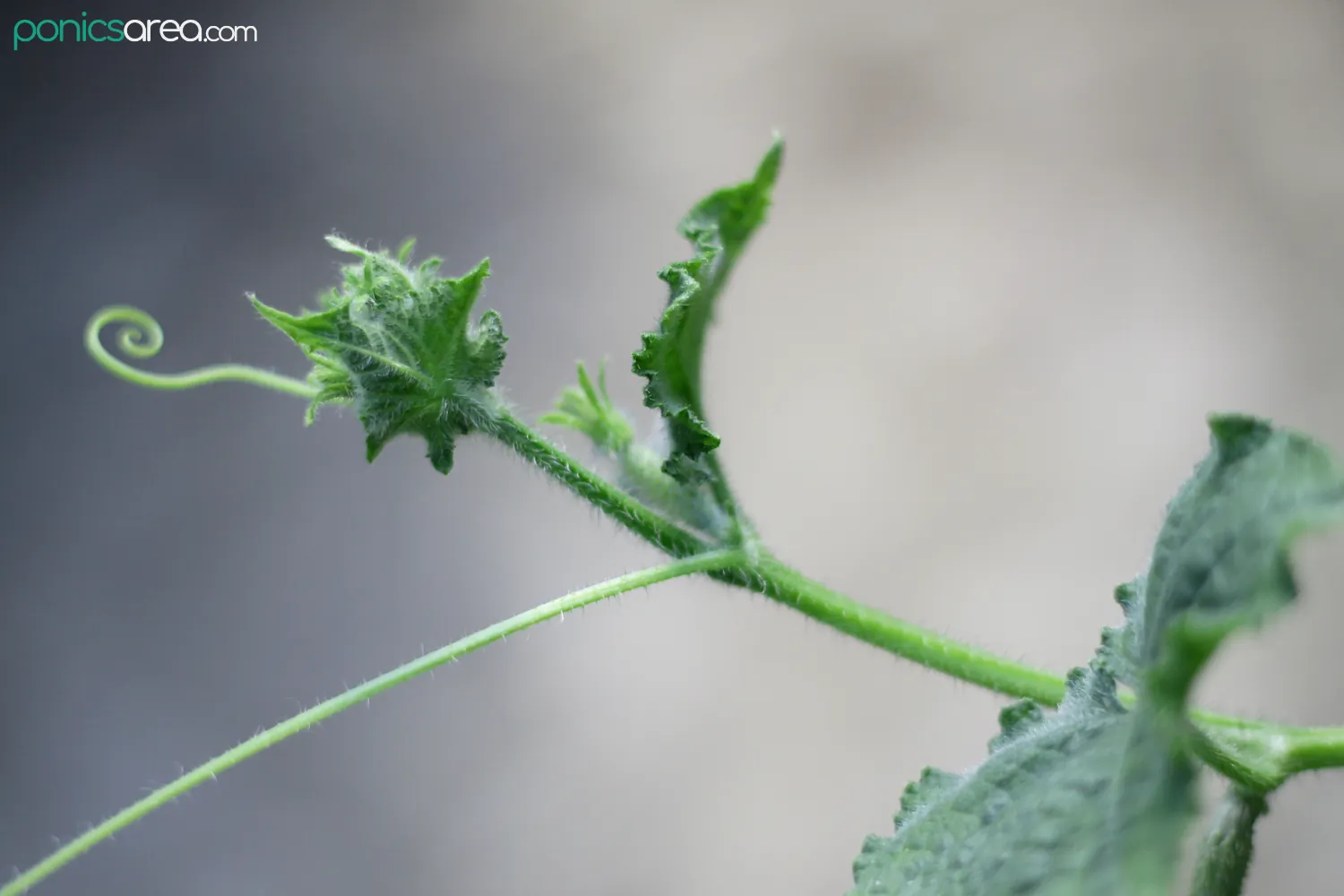
I’m pretty sure that you already know that cucumbers need a lot of water to grow fast and healthy. We’re in luck because hydroponics is all about water and nutrients.
In hydroponics, these crops also need high temperatures and lots of light. If you ensure that, you are well on your way of having rapid growing and high yielding crops.
Let’s see which are other hydroponic conditions for cucumbers.
pH & EC
The recommended pH is 5.0 to 6.5, which is pretty much in the general pH range for hydroponics. So, there are no special requirements here. It’s pretty much the same for tomatoes, you will handle this part easily.
More precise pH levels would stand at levels of 5.6 to 6.0.
If you don’t have fluctuations in temperature, you can maintain the same EC, no matter which period of the year you’re growing your crop in.
However, if you have lower temperatures in the winter and higher in the summer, there are different EC levels.
EC for cucumbers in the summer:
- vegetative stage: 1.6-1.8
- fruiting stage: 2.0-2.2
EC for cucumbers in the winter:
- vegetative stage: 1.8-2.0
- fruiting stage: 2.2-2.5
From these numbers, I can draw a single conclusion: an average EC of 2.0 works well for these plants.
If you’re using rainwater, you don’t have to worry about any of that.
Temperature
Cucumbers love hot temperatures, they go a bit beyond warm.
75 to 86 degrees Fahrenheit (24 to 30 degrees C) is the temperature you should achieve during the day.
Night temperature can be as low as 64 degrees F (18 degrees C).
Overall, this is a warm-season plant and you need to create these conditions for year-round growing seasons.
You can also use a circulating fan. That will give you even temperature, humidity and carbon dioxide levels. You can read this guide on how to use them, it will be helpful for a lot of crops.
Nutrient solution
Fruiting crops, like cucumbers go through the following stages:
- vegetative-only
- flowering and fruit set
- fruit development phase
Each of these phases has different nutrients needs. The N:K (1:1.5) ratio is adjusted as it moves from vegetative to fruiting phases.
However, household growers should just make use of manufactured nutrient solution.
It’s best to just buy a nutrient solution for hydroponics and follow their instructions. You can also make your own.
There are also some formulated for different stages of growth: vegetative and bloom nutrient solutions.
Where to Buy?
Check Price and User Reviews Here
Growing Medium
This will depend on the system that you’re going to use.
Hydroton (expanded clay aggregate), coco coir, rockwool, peat moss, gravel, bark, sawdust are example of great grow media for hydroponics.
Lighting
These crops love full sun. So, in order to grow hydroponic cucumbers indoors, they will need to spend 14 hours per day under grow lights.
Where to Buy?
Check Price and User Reviews Here
Pollination
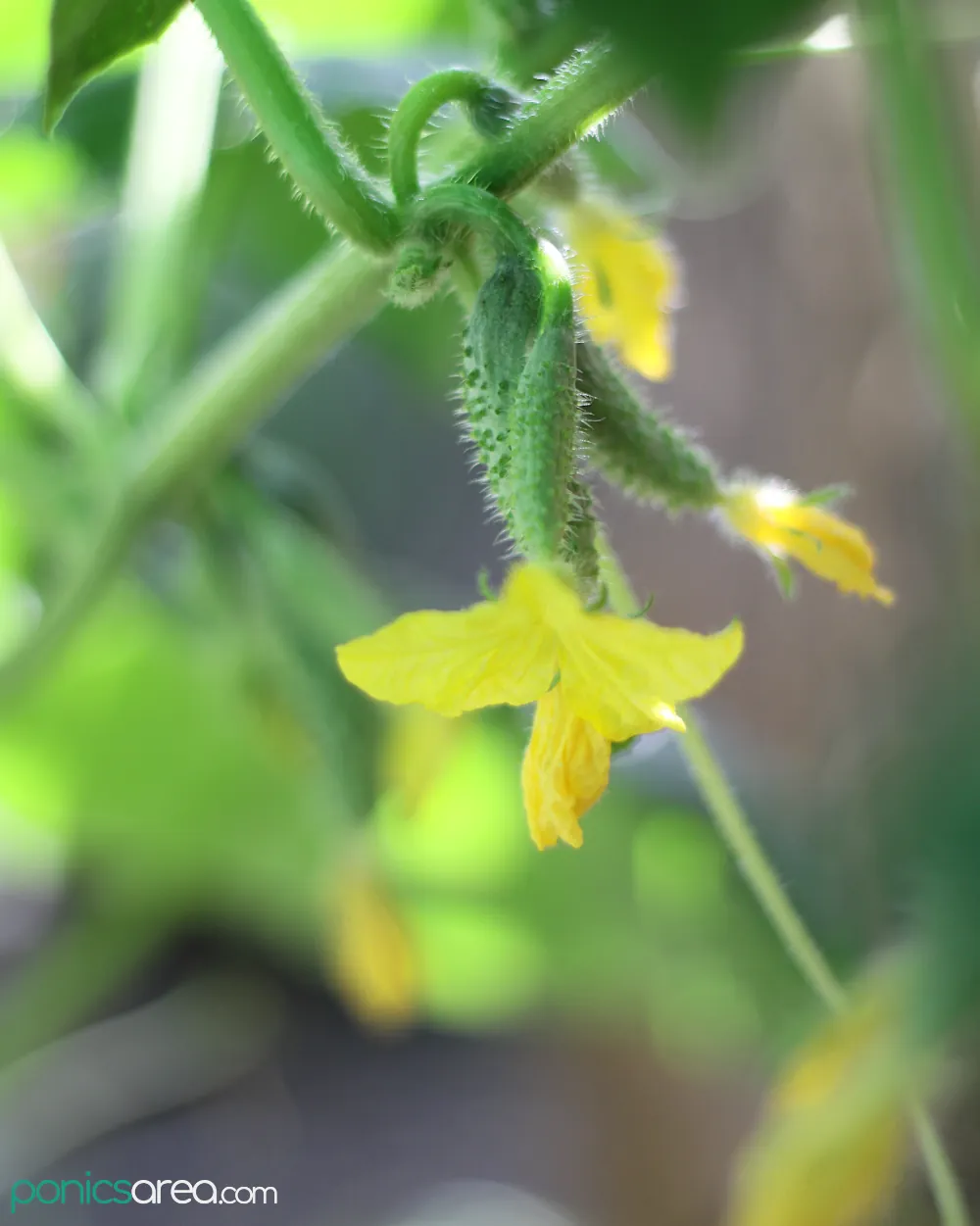
There are varieties that set fruit without pollination, like the European or the mini cucumber varieties.
If you’re growing hydroponic cucumbers indoors and you don’t want to waste a lot of time, make sure to choose self-pollinating varieties.
If you haven’t gotten the self-pollinating type, the female flower will have a small fruit behind, while the male flower will be all alone.
Cucumber Seed Germination
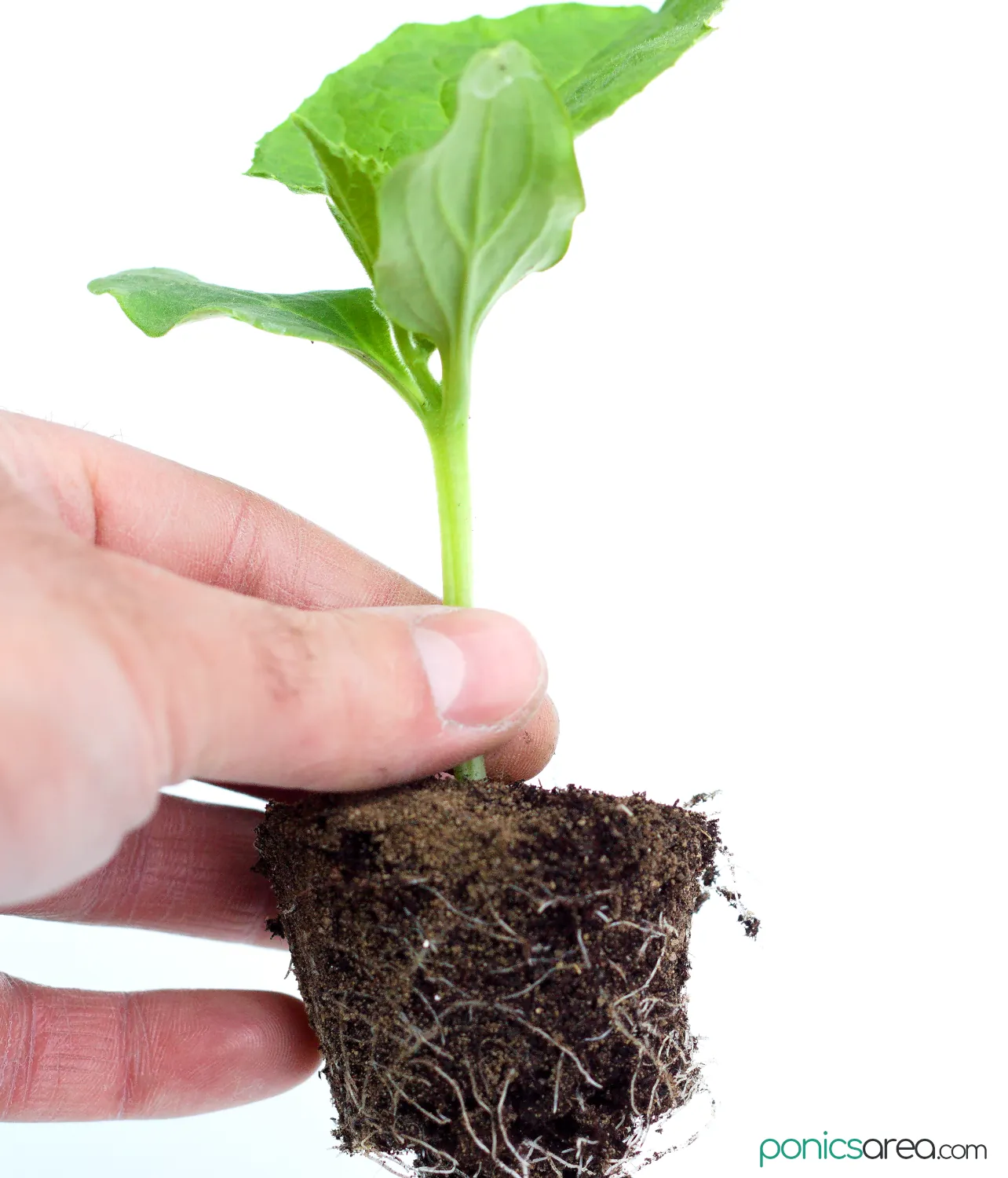
This is quite frankly the easy part. It’s also fast.
Most of us use rockwool cubes for the seeds to germinate but you can also use oasis, coco coir or other foam material.
Seeds germinate within 2-3 days at 84 degrees Fahrenheit (29 degrees C). That’s one of the fastest rates.
After that, temperatures are lowered to 77 degrees F (25 degrees C).
A balanced vegetative nutrient solution can be applied for the seedlings to grow stronger.
In 2 weeks, they can be transplanted together with the rockwool cubes in the system. The seedlings will have 3-4 sets of true leaves.
Roots should already be seen appearing.
3-4 or even 5 plants can be planted per 1 square meter (10 square feet).
Harvesting
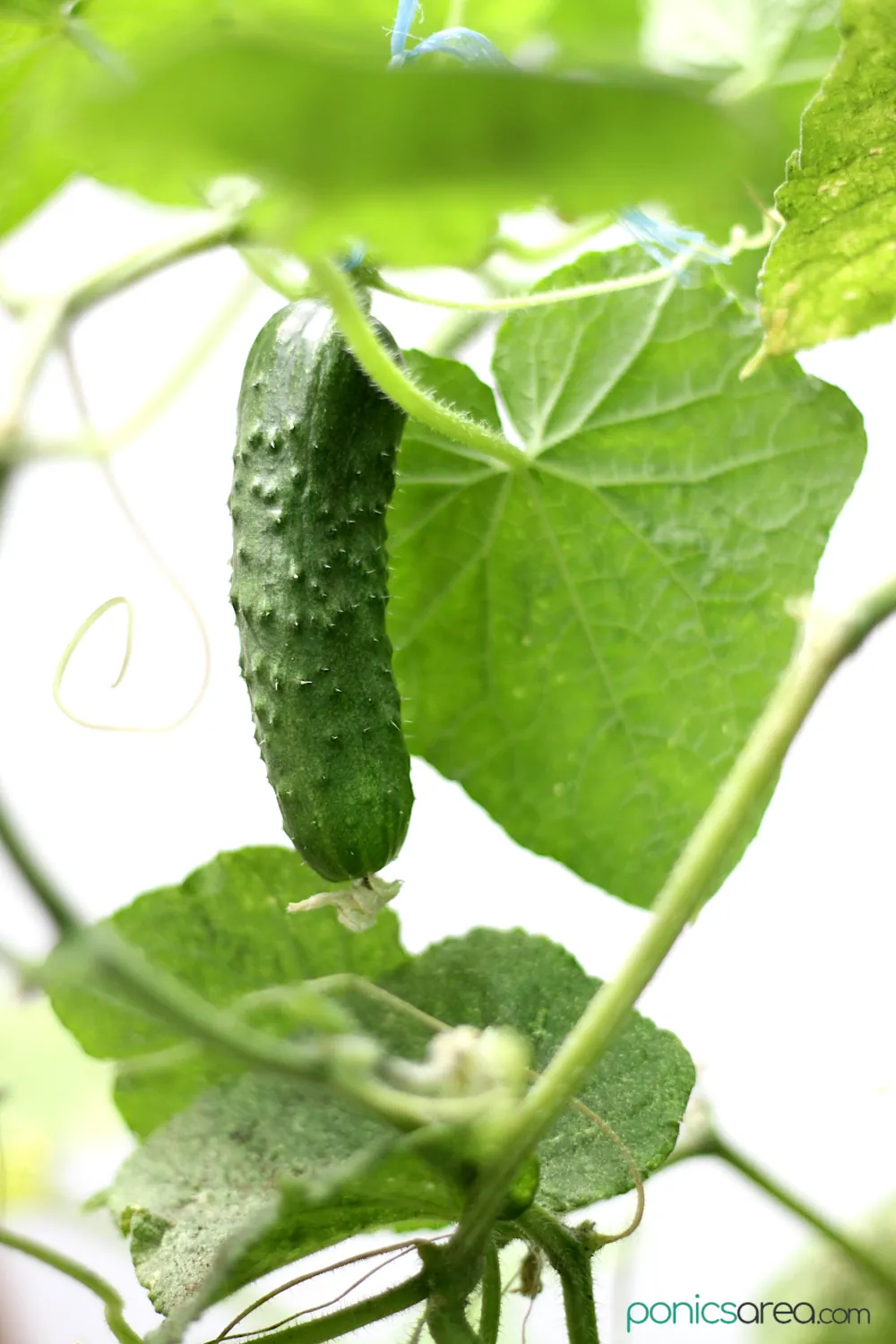
Growth will be quick during ideal conditions of temperature and lighting.
These are plants that require regular pruning but make sure not to remove too much of the foliage. Lateral branches are removed for ventilation.
Elongation is promoted by leaving the two buttons furthest away from the main stem.
Hydroponic cucumbers will be ready for harvest in 8 to 10 weeks.
They will have a dark green color and feel firm to the touch.
Commercial growers harvest for 12 to 14 weeks before crop replacement, with harvesting every 2-3 days.
You can harvest 10-15 times if you have managed to understand how to grow cucumbers hydroponically under the right conditions.
Hydroponic Cucumbers Varieties
It is best to select varieties that are genetically resistant to powdery mildew, leaf mold and cucumber mosaic virus.
- European/Continental or Telegraph – 200-250 mm long, thin-skinned, seedless, dark green, set fruit without pollination (not for really small systems)
- snack or cocktail mini cucumbers – 75-100 mm, spineless, seedless, several fruits are produced at each node, set fruit without pollination
- thick-skinned American slicers
- smooth-skinned Lebanese cucumbers
- Japanese varieties (Tasty Jade)
If you’re growing in smaller hydroponic systems, it’s just best to choose:
- pickle sizes varieties (Boston Pickling Cucumber, The National Pickling Cucumber, The Bush Pickle)
- or cocktail mini cucumbers varieties (Gherkins, Mini Munch, Excelsior, Picolino)
Cucumbers Are Climbers
They need monitoring to prevent them from getting entangled, which makes yields drop.
The height of the plant can reach 1 to 3 feet or 3 to 8 feet (20 – 200 cm) – it depends on the variety. The width can reach 1 to 2 feet (20 – 80 cm).
It’s best to rig something up for the plant to climb on.
Even a sort of stake will work, just tie the plant to it.
If you have a larger budget and you grow both tomatoes and cucumbers, you might install trellis for both crops.
Or install a trellis on the wall.
Where to Buy?
Check Price and User Reviews Here
How to Grow Cucumbers Hydroponically: The Systems
This is where this guide gets complicated again. There are so many systems to choose from when it comes to understanding how to grow cucumbers hydroponically.
The only one that absolutely doesn’t work is the wicks because the wick can’t deliver water and nutrients fast enough to the roots. Large plants don’t do well in this set-up.
If you already have a system, then you’re in the clear and you can already get to work. Good luck.
For the others, the good news is that there are so many systems that can be used to grow cucumbers hydroponically.
You can choose from the following hydroponic systems:
- indoor garden hydroponic systems (AeroGarden, iDoo, Ezorkas, Scottish Boy, Growneer, Hydrofarm, etc.) – these are perfect for beginners, for those who don’t want to build their own system and who want clear instructions and the kit to come with everything they need for growing plants, which applies especially to the AeroGarden, iDoo, and Ezorkas
- the Kratky method with a 5 gallon tote as a container
- DWC system – for containers you have a number of choices: plastic storage tote or 5 gallon buckets are the most popular configurations
- NFT with PVC pipes is another system that works well, although it’s more complicated to build than a DWC and the oxygen content of the nutrient solution can become more depleted for cucumbers than for tomatoes – if you’re planning on growing long-term crops, you should consider either increasing the slope of the PVC pipes or using larger-sized flat-based channels (wider and taller channels) because these plants have a larger root system
- the ebb and flow and the drip are perfect for growing cucumbers hydroponically and for large plants, including hydroponic potatoes, but they also require the most technical knowledge – you can read my guide on the drip hydroponic system to see what I’m talking about, these two are also very similar and maybe they’re something that will be a good fit for you
Grow Cucumbers Hydroponically in AeroGarden
I mentioned AeroGarden because it’s the most well-known manufacturer of hydroponic indoor gardens.
But you can take these instructions and apply them to more affordable kits, like the iDoo and Ezorkas.
For these kind of kits you have to buy grow sponges in order to place the seeds into. If you already own one of these systems, you already know what I’m talking about.
You don’t have to germinate the cucumber seeds separately, you can just place the grow sponges with the seeds into the holes of your model from the beginning.
Add 1-2 seeds per grow sponge.
Put the domes on until the seedlings appear.
Just add nutrient solution once the seedlings appear. Until then, for germination, add just water in the container.
Follow the instructions that come with your indoor garden kit and read on the conditions that I’ve mentioned above in order to grow cucumbers hydroponically in these small models.
If your model has 6 pods maybe it’s best to grow just 3 plants, don’t get them overcrowded. You can cover the remaining holes with spacers.
You will also have to concoct some kind of support for the plant. There are indoor trellis for potted plants that you can buy, they’re quite small so they will feet well in these kinds of hydroponic kits.
Where to Buy?
Check Price and User Reviews Here
Hydroponic Cucumbers Kratky Method
Here is a paper from the University of Hawaii at Manoa that explains how you can grow cucumber hydroponically in a plastic trash container.
What you need:
- 5 gallon storage tote if you’re just experimenting or a 30-35 gallon tote if you aim for a substantial crop
- or you can just use a large plastic trash container but you can only grow one plant per trash can
- fill the container with water and nutrient solution and put the lid on
- 1 1/2 inches diameter x 8 inches long forestry tube inserted into the lid – drill 6 or more 1/4-inch diameter holes in the sides of the forestry tube so that roots can emerge from both the bottom and the sides of the lower part of the forestry tube
- or 3 inch net pots if you can’t find forestry tubes
- you can place more in the lid, depending on the size of your containers, just make sure to leave some spacing between them
- growing medium for the forestry tube/net pots – coco coir, hydroton, peat moss
- grow lights if you’re not growing outdoors in the summer
Grow Cucumbers Hydroponically in DWC
The two preferred methods for household growers are the tote DWC system and the 5 gallon bucket DWC system.
They’re both suitable as systems in our how to grow cucumbers hydroponically guide.
The one with the storage tote as a container is much more easy to build.
The advantage with the buckets is that you can link as many as you want. If you have 5 linked buckets you can grow 5 really big cucumber plants.
And it’s easy to stick stakes in the buckets to support the plants.
Or you can grow them near a wall and build a trellis against the wall or a fence. That goes for the tote DWC, as well.
You can grow cucumber hydroponically even in a raft DWC but there’s one addition to consider. You need to add overhead wires for support, as there is no place where to put in trellis or cages for support.
One thing that I would mention is that you should keep the air pump on at all times.
And if you’ve already learned how to grow cucumbers hydroponically, you might also be interested in growing hydroponic eggplants.
Where to Buy?
Check Price and User Reviews Here
Fruit Shape Deformation
It’s not unusual to get fruit deformities when growing cucumbers, tomatoes or peppers.
These problems appear from issues during pollination and fruit set. They mainly occur due to lower temperatures during flowering and fruit set.
Rapid changes in nutrient solution EC can lead to fruit cracking during the later stages of fruit development or as it starts to ripen.
Excessive pruning of foliage can also lead to fruit cracking, just as it the case of high temperature and light levels.
This teaches us that we must pay attention to all aspects when it comes to knowing how to grow cucumbers hydroponically, which can take quite a bit of time and involvement.

